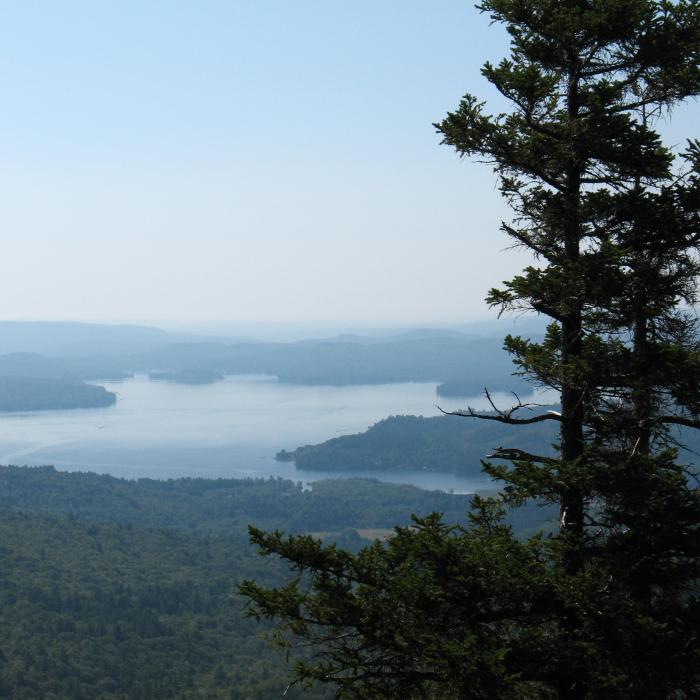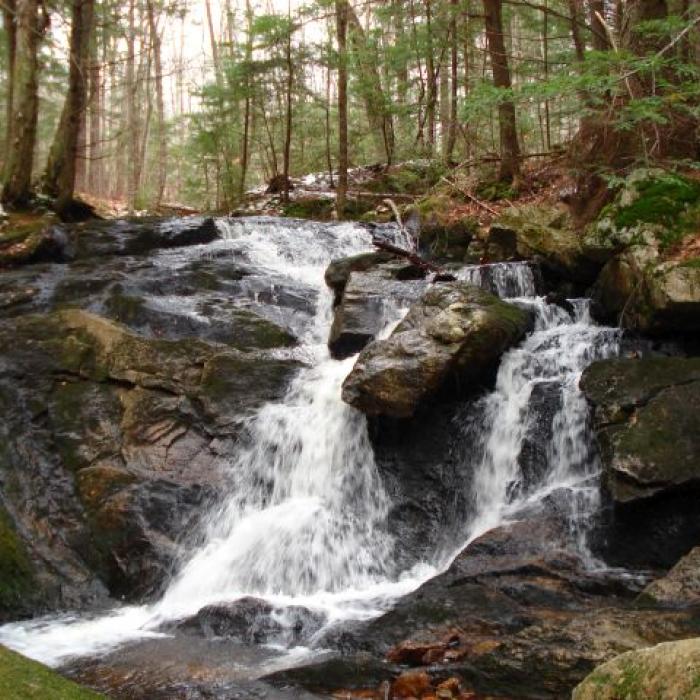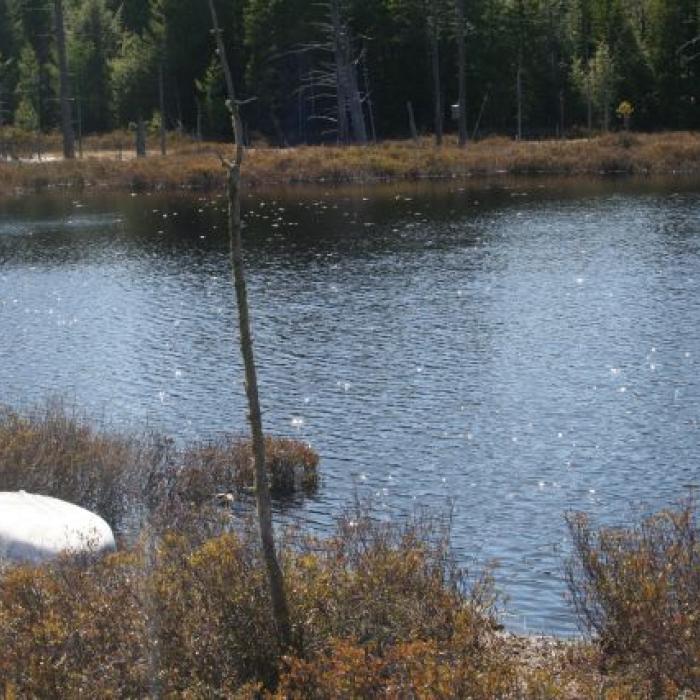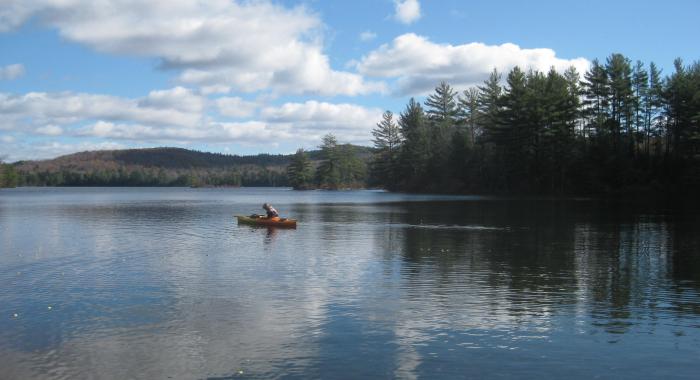About the Property
Stretching more than 1,200 acres across the western slopes of Mount Crosby, Cockermouth Forest offers a mix of moderate to strenuous hikes, incredible views, and numerous opportunities for exploration. Follow a series of interconnected trails and woods roads to placid Little Pond or enjoy picturesque views from the cliffs overlooking of the White Mountains, Squam Lake, Lake Winnipesaukee, and Newfound Lake from Bald Knob and Mount Crosby.
Property Details
The name “Cockermouth Forest” has historical significance in that from 1760 to 1790 the town of Groton was known as the town of Cockermouth, named for the river that runs through it. Bill Wadsworth, who donated this land to the Forest Society, first came to the area to attend Cockermouth Boys Camp.
The internal road network, old cellar holes and the history of the Remick Place (a circa 1830 kneewall cape formerly located on the property) indicate that much of the land was farmland in the early to mid 1800s. The Remick Place, including the stone foundation, was dismantled and rebuilt at a farm in New Hampton. The house’s frame represented one of the last remaining examples of this type of construction.
William B. Wadsworth, or simply, “B”, as he was affectionately known, was a professor of electrical engineering who held patents for ear protectors and aided in the development of earphones. He began acquiring land in Groton in the 1950s in remembrance of youthful summers spent at the nearby Cockermouth Camp and managed the land for timber. He blazed extensive hiking trails on the property, including a trail to Bald Knob, where he installed an antenna stanchion high on Bald Hill -- a testament to his fondness for tennis and electronics. He actually carried a battery powered 12 volt TV up the 1,900-ft peak so he could watch the Wimbledon Tennis championship broadcast on Boston television.
Circumstances of acquisition:
In 1991 William Wadsworth donated 1,002 acres of his property as part of his estate plan. His primary goal in donating the property was to protect the land’s diverse wildlife habitat. This land is valued for its large size, wildlife habitat, timber production, and recreational experience.
Please see our Visitor Use Guidelines page for a complete list of rules and regulations for Forest Society reservations.
Trail Information
Little Pond via Romley-Remick Rd. and John F. Woodhouse Trail
Yellow blazes
This trail climbs through the Forest Society’s ecoreserve section of the property. You'll see a unique 9-acre bog surrounding Little Pond. The rugged ridgeback overlooking Little Pond supports a patch of the uncommon red oak – pitch pine rocky ridge natural community. This trail presents a great opportunity for wildlife viewing.
You can extend this hike by taking the Cliff Loop Option, which is moderate to strenuous and adds a half mile.
High Pasture Loop
Yellow blazes
The High Pasture Loop takes you around the 2010 timber harvest and past the highest cellar hole on the property. You will experience a nice mix of hardwood and softwood forest with large openings along old logging roads.
Bald Knob and Mount Crosby
Yellow blazes
There are two loops: The Bald Knob - Old Pasture Loop is 4.1 miles long. The Bald Knob - Remick Place Loop is 3.9 miles long.
The ridge trail between Bald Knob and Mount Crosby is a typical mountainous ridge trail with minor ups and downs.
The connector from High Pasture Loop to Tenney Lane is quite moderate and follows old roadways.
Beeline Trail
Yellow blazes
Aptly named, this is a no-nonsense trail with unremitting steeps and serves as a straight-shot shortcut to the summit of Mount Crosby.
Old North Groton Road to Hardy Road Extension
This out and back hike is a great moderate alternative for an enjoyable walk through the woods on old woods roads. It’s a great opportunity to check out old cellar holes and think about past land use.




